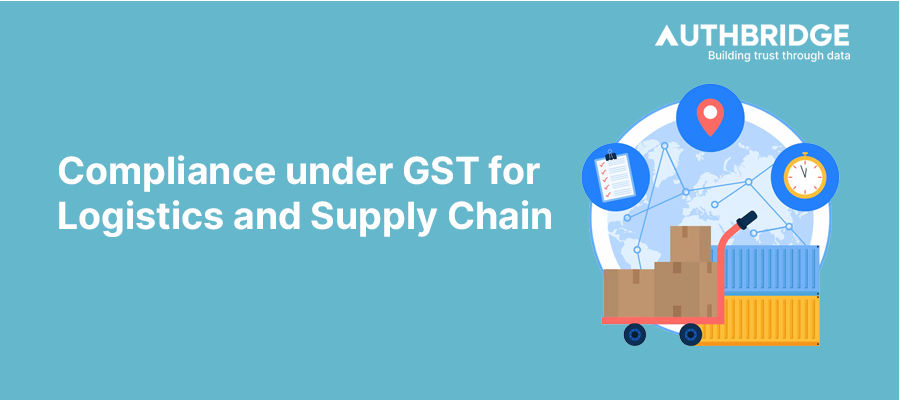A Deep Dive Into GST Compliance For Logistics And Supply Chain

The implementation of the Goods and Services Tax (GST) in India has been a watershed moment for the logistics and supply chain industry, heralding a new era of tax compliance and operational efficiency. This transformative policy aimed to dismantle the complex tapestry of indirect taxes and create a single, unified market across the country. For the logistics sector, which is the backbone of trade and commerce, GST has not only simplified the tax structure but also paved the way for streamlined operations and cost optimizations.
Impact of GST on the Logistics and Supply Chain Industry
GST has significantly impacted the logistics and supply chain industry by reducing the cost and time involved in the movement of goods across state borders. The removal of interstate check posts and the introduction of e-way bills have expedited transportation, while the consolidation of warehouses has led to more efficient inventory management. This section explores the transformative effects of GST on logistics operations, highlighting the shift towards a more organized and efficient sector.
Overview of GST Compliance for Logistics
Navigating the GST landscape requires a thorough understanding of the compliance framework, including registration, tax rates, exemptions, and return filing procedures. For logistics companies, compliance not only ensures legal adherence but also enables the leveraging of tax credits and optimizations. This overview sets the stage for a deeper dive into the specifics of GST compliance in the logistics and supply chain industry.
Key Changes Brought by GST
Unified Tax Structure
The introduction of GST marked the end of multiple indirect taxes levied by the central and state governments, replacing them with a single, comprehensive tax. This unification has significantly simplified the tax regime for interstate and intrastate logistics operations, eliminating the cascading effect of taxes and fostering a more conducive environment for trade and commerce.
Reduction in Logistics Costs
The streamlined tax structure under GST has led to a noticeable reduction in logistics costs. The consolidation of warehouses, driven by the elimination of state-wise tax variances, and the faster movement of goods have contributed to lower operational expenses and enhanced competitiveness in the logistics sector.
GST Compliance Requirements
GST Registration Thresholds
Logistics and supply chain businesses with an annual turnover exceeding Rs. 20 lakh (Rs. 10 lakh for special category states) are mandated to register under GST. This section delves into the registration process, highlighting the documentation required, the implications of registration, and the benefits of being within the GST framework.
Filing of GST Returns
Compliance with GST involves the regular filing of various returns, detailing outward supplies, inward supplies, and the taxes paid. The logistics sector, with its complex supply chains, must ensure accurate and timely filing to avoid penalties and to maximize the benefits of input tax credits. This part of the blog will outline the return filing process, deadlines, and best practices for maintaining compliance.
Impact on Logistics Operations
Fewer Trade Obstacles and Check Posts
One of the most significant operational benefits of GST for the logistics industry is the reduction of trade barriers and the elimination of check posts at state borders. This has not only reduced transit times but also minimized the paperwork and bureaucratic hurdles previously associated with interstate movement of goods.
Warehouse Consolidation
The GST regime has incentivized businesses to reevaluate their warehousing strategies, leading to the consolidation of storage facilities. This shift from a decentralized to a centralized warehousing model has implications for inventory management, distribution efficiency, and cost savings. This section will explore the strategic considerations and operational impacts of warehouse consolidation post-GST.
Challenges and Solutions
Compliance and Documentation Challenges
Despite the benefits, the transition to GST has presented several challenges for the logistics sector, particularly in terms of compliance and documentation. This section will discuss common hurdles such as classification disputes, invoice matching, and the management of input tax credits, offering insights into overcoming these obstacles.
Technology Adoption for GST Compliance
Technology has emerged as a critical enabler for GST compliance in the logistics and supply chain industry. From GST-compliant ERP systems to e-way bill generation and digital return filing, technological solutions have streamlined compliance processes. This part of the blog will highlight the role of technology in facilitating compliance, reducing errors, and enhancing operational efficiency.
Conclusion
The journey of the logistics and supply chain industry under the GST regime has been one of adaptation and transformation. While the sector has reaped the benefits of a simplified tax structure and operational efficiencies, the path to full compliance continues to evolve. As the GST framework matures, logistics companies must stay abreast of regulatory changes, leverage technology, and adopt best practices to navigate the complexities of compliance successfully.
The future of GST compliance in logistics and supply chain management looks promising, with continued government efforts to simplify procedures and enhance the ease of doing business. By embracing change and focusing on compliance, the logistics sector can look forward to greater growth and integration into the global supply chain.
Category

Abhinandan Banerjee
(Associate Manager - Marketing)
Abhinandan is a dynamic Product and Content Marketer, boasting over seven years of experience in crafting impactful marketing strategies across diverse environments. Known for his strategic insights, he propels digital growth and boosts brand visibility by transforming complex ideas into compelling content that inspires action.



